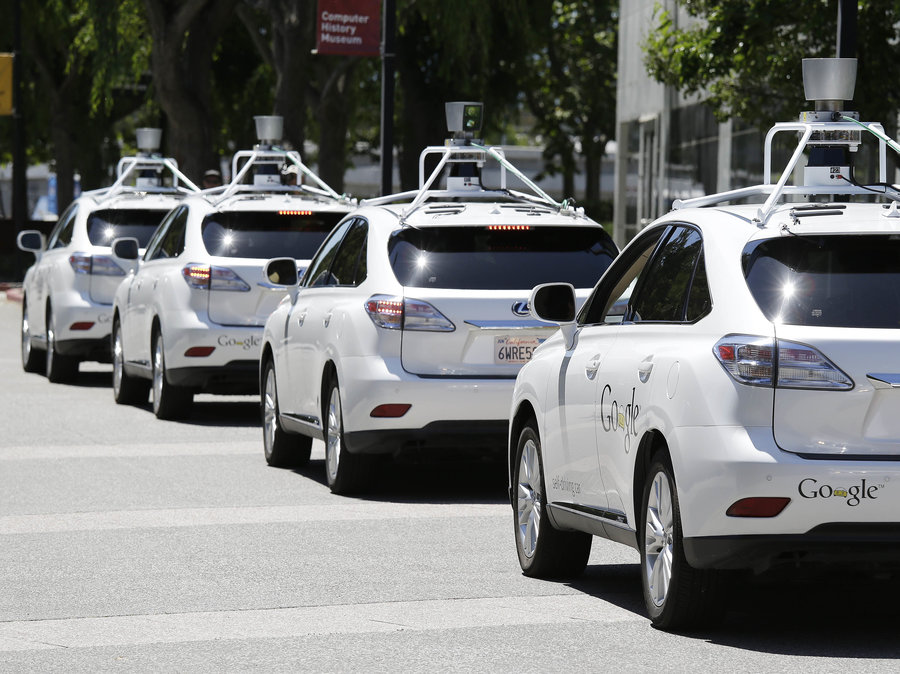By 2030, the majority of people will be travelling on autonomous vehicles
Lindsey Peng CONTRIBUTOR
Photo: Eric Risberg / THE ASSOCIATED PRESS.
More than one half of the world population now lives in urban areas and by 2030 this number will swell to about 5 billion people. As the pace of urbanization continues to accelerate, existing infrastructure and services in place become limiting in the needs of today and tomorrow. One of the major problems arises from the transportation system, which presents itself as a barrier to ensuring a good quality of life for people crowded in megacity centers.
Some disadvantages of traditional transportation become more serious sources for the cultural and environmental degradations as waves of people continuously aggregate. For example, additional individual vehicle ownership decreases convenience as it increases congestion. It only adds more traffic and CO2 emission, and it is a major waste of materials and space as cars are left in parking lots throughout most of the day. On the other hand, public transportation such as buses also has key flaws. Unable to customize the solution for individual needs, it aggregates the needs of a large crowd of people and hence wastes everyone’s time as well as acts as an infectious flu hub.
From the current changes we are seeing, it is inevitable that transportation will shift from an asset we own to a service industry offering end-to-end autonomous mobility solutions. It is predicted by 2030 that 95% of U.S. passenger miles travelled will be served by on-demand autonomous vehicles owned by fleets, not individuals (RethinkX report). Already, we are seeing transportation as service platform providers, such as Uber, Lyft, and Didi. However, this is only the start of the revolution. For example, a company in San Francisco called Chariot was launched to reduce long transportation hours and traffic frustrations for 9–5ers. Chariot’s business model is based on crowdfunding: new customized routes of commute will open up if enough people are on that route. As opposed to a top-down design of public transportation from the government, this solution allows people to pay for only the route that they need to be on without owning a personal vehicle. On top of that, such a company collects new data and allows users to have live information about conditions of their transportation services via their phone. For example, you can see how many seats are available in the next ride as opposed to waiting for buses in rush hour, only for it to show up to be packed with people.
Many existing transportation businesses are developing new technological ideas so they won’t be left behind in the new era. The new era of transportation will be competing fiercely and, as a result, their fleets will quickly transition from human-driven internal combustion engines to autonomous electric vehicles. Most major car manufacturers, including app-based companies such as Uber, have invested in building their own autonomous vehicles. Companies such as BMW and Volkswagen are also developing their own car-sharing and servicing models such as Ride Cell and MOIA.
Innovation is not only manifested in the software side, but also new hardware models are also undergoing changes to further resolve traffic congestion. To bypass the limitation of available space on the ground, we are seeing daring entrepreneurs try out new underground and aeration solutions.
For example, Terrafugia’s vehicle Transition is designed to fly like a typical light-sport aircraft in the air and drive like a typical car on the ground. Other competition in the field has already followed, such as road-able aircraft by AeroMobil, electrical vertical take-off and landing jet by Lilium Aviation, a three-piece pod, car, and drone vehicle by Airbus, and Uber Elevate by Uber. On the other hand, Elon Musk is revolutionizing the new underground transportation with the Boring Company developing Hyperloop, which will supposedly reach 1,200 km/h (700 mph) providing a new high-speed transportation technology.
We are on the cusp of one of the most consequential disruptions of transportation in history. If autonomous vehicles pass various political barriers, it is expected to see more technological innovations, which will shift trillions of dollars from old investor value to new business opportunities. As a result, as transporting experiences elevate other revenue sources from advertising, data monetization, entertainment, and product sales will open a road to free transportation infrastructures. Like in many other fields and infrastructures, the transportation revolution has only just begun, and there are ample opportunities for students to explore how to address current problems we face locally in Toronto.




